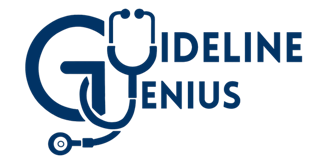Induction of Labour
NICE guideline [NG207] Inducing labour. Published: Nov 2021.
Guidelines
- >41 weeks gestation (due to ↑ risk of stillbirth and Caesarean birth)
- Pre-term pre-labour rupture of membrane at 34-37 weeks - see this article for more details
- If 34-37 weeks → offer induction of labour now OR expectant management until 37 weeks
- If <34 weeks → do not offer induction unless there are additional indications
- Prelabour rupture of membrane at term
- Offer induction of labour now OR induction after 24 hours (if labour not naturally started)
- Group B Streptococcus +ve status if
- P-PROM at 34-37 weeks → induction now OR Caesarean birth
- Prelabour rupture of membrane at term → induction now OR Caesarean birth
- Maternal request
- Intrauterine fetal death
Counsel women with previous Caesarean birth of risks of induction of labour:
- Risk of uterine rupture
- Increased risk of emergency Caesarean birth
- Assess fetal head position and engagement:
- Abdominal palpation
- If uncertain (e.g. breech suspected) → ultrasound
- Vaginal exmaination to calculate the Bishop score (more detail below)
- Perform cardiotocography to confirm:
- Normal fetal heart rate pattern, and
- Absence of significant uterine contractions (to rule out labour or hyperstimulation)
- If normal and low risk → switch to intermittent auscultation
- If abnormal fetal heart rate / uterine hyperstimulation → continuous cardiotocography + stop further induction doses and remove if possible
Membrane sweep counselling:
- Procedure performed during vaginal examination: a finger is inserted into the cervix to perform a circular sweeping motion, attempting to separate the amniotic sac membrane from the uterine wall
- Underlying mechanism: this stimulates the release of prostaglandins which helps to soften and open the cervix
- Possible side effects: discomfort, light bleeding / cramping, but generally safe
Membrane sweep is NOT a formal induction method but can reduce the need for formal induction (i.e. labour more likely to start without the need for additional pharmacological or mechanical methods of induction).
| Score | Cervix dilation (cm) | Cervix position | (%) | Cervical consistency | Fetal station |
|---|---|---|---|---|---|
| 0 | 0 | Posterior | 0-30 | Firm | -3 |
| 1 | 1-2 | Midposition | 40-50 | Moderately firm | -2 |
| 2 | 3-4 | Anterior | 60-70 | Soft | -1,0 |
| 3 | ≥5 | ≥80 | +1,+2 |
Bishop score interpretation:
- ≥8: indicates a favourable / ripe cervix (i.e. cervix is ready to dilate)
- 6: cut-off to determine the choice of induction method
- Topical dinoprostone (PGE2) as vaginal tablet / gel / vaginal delivery system, or
- Oral misoprostol (low dose 25 mcg)
Consider mechanical methods (e.g. balloon catheter, osmotic cervical dilator) if:
- High risk of uterine hyperstimulation and risk of uterine rupture, or
- e.g. Previous Caesarean birth, multiple pregnancy, complex uterine scars
- The patient prefers
Rationale: Bishop score ≤6 indicates an unfavourable cervix for labour, therefore cervical ripening methods are used to further prepare the cervix before active labour can be safely and effectively induced.
- , and
- IV oxytocin infusion
Rationale: Bishop score >6 indicates that the cervix is ripe and ready for labour, therefore there is no need to further ripen the cervix and labour can be directly stimulated.
- Tachysystole: >5 contractions per 10 min for at least 20 min, and
- Hypersystole / hypertonicity: contraction lasting ≥2 min
Management:
- Stop giving further induction medication
- Remove vaginally administered products if possible
- Perform continuous cardiotography
- Tocolysis may be used to treat hyperstimulation
Hyperstimulation caused by misoprostol may be more difficult to reverse.
Mechanical methods are less likely to cause hyperstimulation than pharmacological methods.
- Vaginal dinoprostone or
- Mechanical methods
Ask the women to contact their maternity team if ANY of the following:
- Contraction begins
- No contractions in an agreed timeframe
- Membrane ruptures
- Bleeding develops
- Any other concerns (e.g. reduced fetal movement, excessive pain or contractions, side effects)

